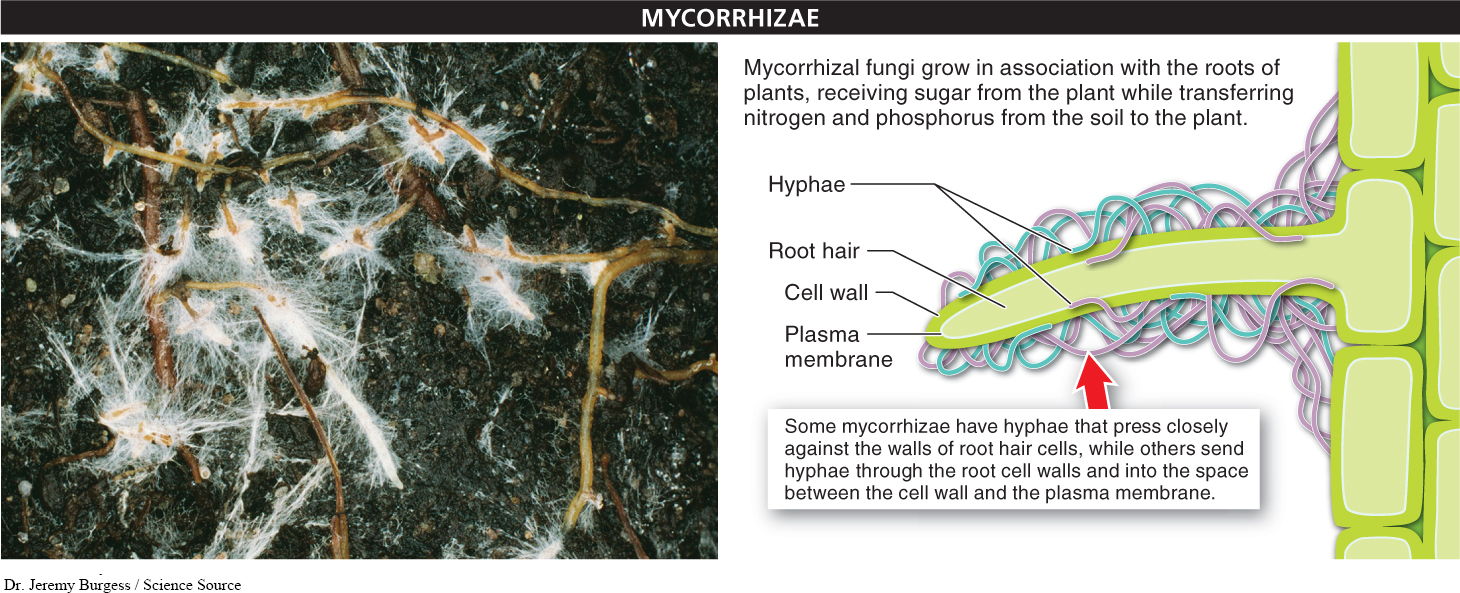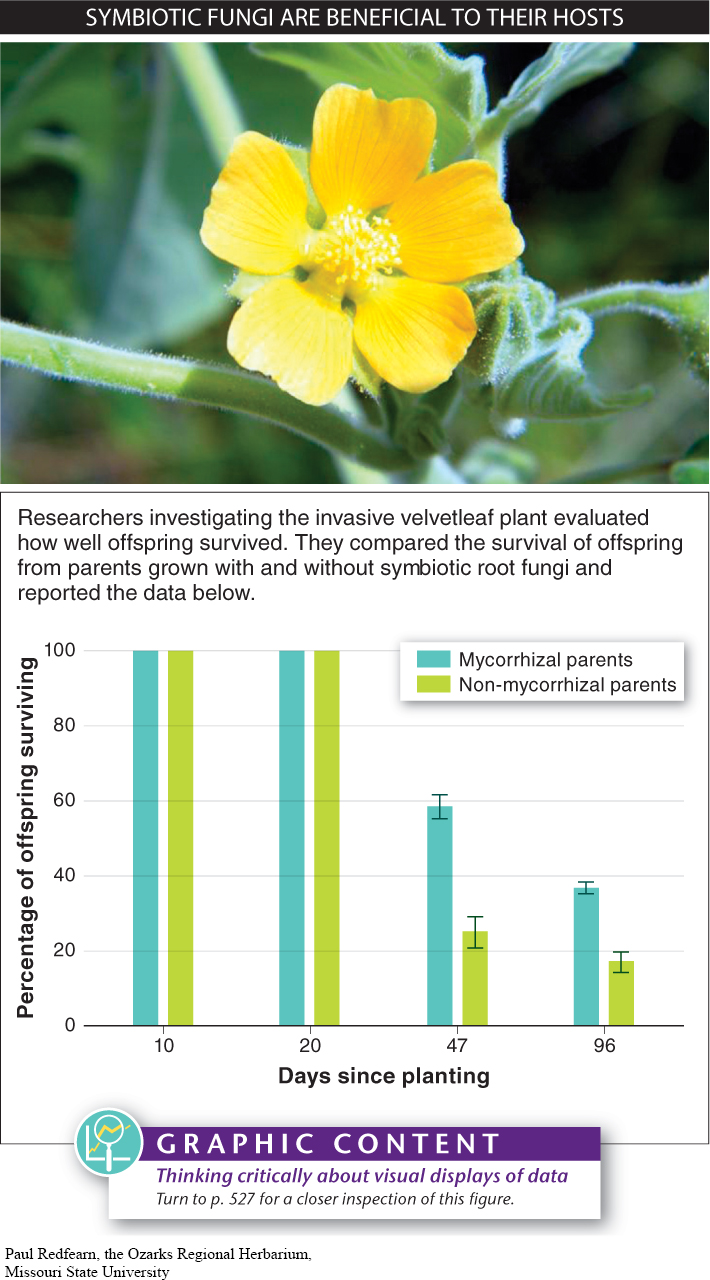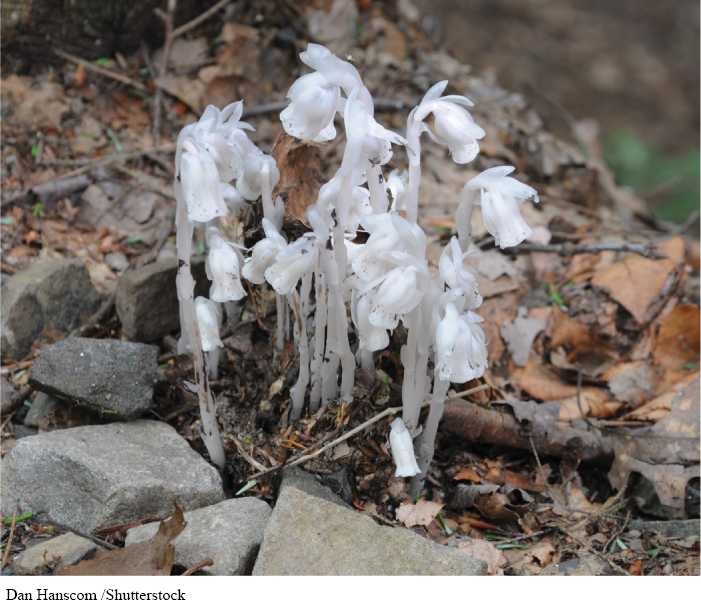If you examine the roots of a plant with a microscope, you will find round structures and fibers closely associated with the fine rootlets and root hairs. These are root fungi, or mycorrhizae (pronounced my-

Beneficial associations between roots and fungi are ancient—

523
Not all plants play fair, however. Some take nutrients from the fungus and give nothing in return. One of the best known of these mycorrhizal parasites is the ghost pipe (named for its ghostly white appearance), which grows in forests in the northern hemisphere (FIGURE 12-36). The ghost pipe is an angiosperm related to heaths and heathers. Its roots are associated with mycorrhizal fungi that are also connected to the roots of trees. The ghost pipe obtains all its nutrients from or through the mycorrhizae: nitrogen and phosphorus are provided by the mycorrhizal fungus, and sugar travels through the fungus from tree roots to the ghost pipe.

Some plants manipulate mycorrhizae to gain a competitive advantage over other plants. Garlic mustard, for example, was brought to North America by European colonists to add a tangy flavor to salads. Initially it was planted in kitchen gardens, but it escaped into the wild, where it has proved to be an extremely successful invasive species. Garlic mustard excretes compounds from its roots that interfere with the partnership between mycorrhizal fungi and local native plants. Because the native plants do need mycorrhizal fungi to prosper, the destruction of these fungi by garlic mustard weakens the plants. This chemical warfare is so successful that garlic mustard has wiped out entire populations of native woodland plants and is threatening many forests in the central United States.
524
Fungi also form mutually beneficial relationships with chlorophyll-
TAKE-HOME MESSAGE MESSAGE 12.15
Plants and fungi have a close and mutually beneficial association in mycorrhizae. Mycorrhizal fungi grow in intimate association with the roots of most plants, receiving sugar from the plant and transferring nitrogen and phosphorus to the plant.
Describe the relationship between plants and the fungi known as mycorrhizae.
Mycorrhizae produce very thin cellular structures called hyphae that either press closely against plant root hairs or actually penetrate the walls of cells in plant root hairs. Mycorrhizae extract phosphorus and nitrogen, which they subsequently release into the roots of these plants, allowing plants to grow faster and taller. In return, the fungus receives sugars produced by the plant, which it uses to support its own cellular respiration.